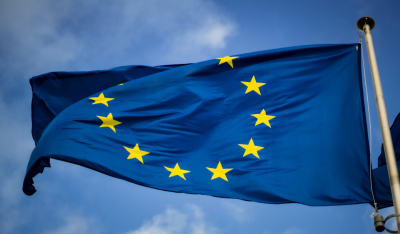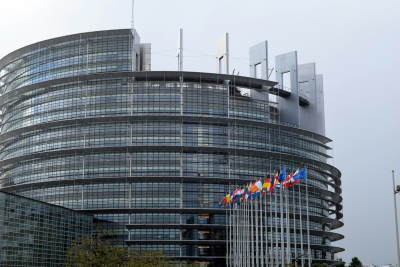An internal evaluation, a recent book, and our own study of the European Stability Mechanism point to persistent shortcomings
Created in 2012, the European Stability Mechanism (ESM) replaced its temporary predecessors, the European Financial Stability Fund (EFSF) and the ad hoc Greek Loan Facility, all established in the midst of the euro crisis. Five years on, it is about time to review the ESM’s operations.
It is therefore unsurprising that 2017 became the year of ESM reviews: We at Transparency International EU published our in-depths study of the ESM’s transparency and democratic accountability on 6 March, just before Prof. Randall Henning published his latest book on the ESM, fittingly entitled ‘Tangled Governance’, three weeks later.
The ESM was open to our efforts throughout this project, ready to discuss various options for reform, receive our researchers and review our study. On the day of its launch, Managing Director Klaus Regling announced he changes to the ESM’s gift register and the publication of his declaration of financial interests, both in line with recommendations we made, while inviting us to present the study in an internal seminar for ESM staff in Luxembourg, held in late May.
Today, the ESM itself published its own evaluation. Its closest peer-institution, the IMF, actually has an independent evaluation office. The ESM as a young institution with under 200 staff may not have a dedicated office (yet), but commissioned Gertrude Tumpel-Gugerell, former ECB Executive Board member, to conduct the ESM evaluation. While she is independent, her evaluation relies on ESM staff.
Our study focused on ESM governance, Prof. Henning’s book focuses on the Troika in the euro crisis, while the ESM’s independent evaluation looks at ESM interventions in programme countries. Despite the distinct focus, all three evaluations have one theme in common, the difficulty of ensuring the ESM’s accountability. This difficulty is three-fold: it concerns the question of who oversees implementation of the “bailout” programmes; who controls the ESM, and how these are in turn held accountable by democratic institutions.
| ESM programme implementation: | Control over the ESM: | ESM accountability |
| International Monetary Fund (IMF), European Commission, European Central Bank (ECB), and increasingly the ESM itself | Euro area Member States / the Eurogroup | Decentralised accountability of Finance Ministers towards their respective parliaments |
| These institutions have to deliver a positive assessment before additional funds (tranches) can be disbursed. The fact that four separate institutions assess the programme jointly muddies accountability, and leads to “tangled governance”. | The ESM looks like an EU institution, but is outside the EU treaties, it is controlled by Member States. Where the ESM relies on the Commission and ECB, they are the ESM’s agents and accountable to it. | Finance ministers are accountable to national parliaments for their actions within the ESM. There is no accountability for the ESM as such, unless ESM finance ministers can be held responsible for the ESM as a whole. |
While the first two problems can be addressed by developing the ESM into a “European Monetary Fund” that would have the capacity to assess ESM programmes without the Troika, and by including this new institution in the EU treaties, the third problem will persist.
In principle, taking decisions by consensus should enable decentralised accountability, as every minister could then be held responsible for the ESM’s actions as a whole. In practice, however, some ministers wield a lot more influence than others, and extensive peer-pressure and horse-trading behind closed doors means that decisions which are effectively taken at the European level can only be rubber-stamped at the national level, hollowing out the ESM’s decentralised accountability.
Most national parliaments take a relaxed approach to ESM accountability, but creditor countries tend to be much more hands-on. The German Bundestag even has to vote on each and every disbursement by the ESM, even for later tranches in a previously agreed programme, which complicates and politicises negotiations, in particular in view of upcoming German parliamentary elections. Yet budgetary sovereignty lies at the heart of the constitutional setup of parliamentary democracy, making this a particularly hard nut to crack and effectively giving all Member States a veto. For more on this, see our in-depths study on the ESM here.
Ms Tumpel-Gugerell’s report hints at these problems when it recommends that the “Board of Governors should further refine and develop the ESM governance framework”, echoing the Five Presidents’ Report which laments “complex and lengthy” ESM decision-making processes, which Prof. Henning characterises as “tangled governance”. The ESM evaluation notes that the governance worked “reasonably well” but posed “efficiency concerns”; in particular, “information sharing between partner institutions often relied on informal relationships.”
This echoes a second problem, on document management and access to documents. Such problems are typical for a young institution, and are rendered complicated by the number of stakeholders involved. The ESM has no access to documents procedure, therefore documents can only be obtained if they are held by the Commission, or made available indirectly via the Council of the EU. While the ESM has greatly improved access to programme documentation through its 2016 transparency initiative, we continue to call on the ESM to facilitate this with a public register of documents and a formal access to documents procedure, which will have to be adopted at the latest when the ESM becomes an EU institution.
Check out the 6 recommendations to improve ESM programs issued by Gertrude Tumpel-Gugerell pic.twitter.com/0GeaVECVE0
— ESM (@ESM_Press) June 15, 2017
Indeed Ms Tumpel-Gugerell writes that her evaluation was “constrained by accessibility of data and documents”, a problem that also exists with regard to the ESM’s methodology to compute debt sustainability assessments. Here too, the ESM has made recent progress, publishing a series of working papers that further elucidate the methodological differences between the IMF and the ESM, here. But for as long as Reuters reports on leaked ESM-internal documents projecting a Greek primary surplus above 3 % for 20 years or more, we endorse recommendation number 1 of the ESM’s evaluation, calling on it to “focus on programme credibility and support ownership”. It is easy to see how greater transparency on its methodology and decision-making would expose such improbable assumptions to greater scrutiny, and in the process lead to greater credibility, helping programme countries to take ownership of the programme and implement reforms.
The ESM’s Board of Governors also welcomed the latest report, mandating ESM staff to make “proposals that would improve ESM’s working methods and transparency”. We expect a number of changes to the ESM’s processes and governance in coming years, in the broader context of the completion of the euro’s institutional architecture, as well as recent Commission proposals to formalise the Eurogroup and make it accountable to the European Parliament. EU-level accountability may reduce creditors’ control over the so-called “bailout” fund, but at the same time ensure that it acts in the best interest of the EU as a whole.
A little bit of publicity can always help get some misunderstandings out of the way. As it stands, the ESM is not an EU institution and is directly controlled by its Member States. Yet ensuring accountability starts with clarifying who is responsible. The ESM’s tangled governance does the exact opposite, allowing Member States to hide behind the EU and shift the blame for unpopular structural reforms and budget cuts.




